One of my favorite parts of my job is interacting with aspects of history I never would have sought out for myself. Sometimes that means that I spend a day working on the papers of a Nobel prize winner and the next day I am making a box for the scrapbook of a swimming coach. Occasionally one of these objects catches my attention, and I have the opportunity to do a little more research into them.
Elvira Bates’ friendship album came across my desk from the Lilly Library with a request to make a custom box. The outside of the album is unassuming to say the least. It has a plain black cover with black pages, and hardly looks like there is anything terribly interesting in it. However, upon opening it, a glimpse into the past is revealed. It is a window into the community of friends and family that surrounded Mrs. Bates and the culture of a small town in Connecticut in the early 20th Century.
But what is a friendship album?
Becoming popular in the 1820s, friendship albums are collections of drawings, poems, autographs, photographs, and quotes that were the precursors to modern-day yearbooks and social media. Often the owner of the book would lend theirs to a friend or acquaintance so that they could make their entry into the album. Other times they were a way of collecting and remembering travels. Most commonly, friendship albums were owned and created by young women, often during their time in higher education.
In this case, however, the album appears to be a surprise gift to Elvira Bates for New Years Day 1910 when she was 67 years old. It consists of 365 entries on daily calendar notes, plus several pages of additional entries at the end. As I went through each entry, I was struck by the complex creativity of many of the entries. Some entries are serious, some are humorous, but most display effort and thought.
A few of my favorites:
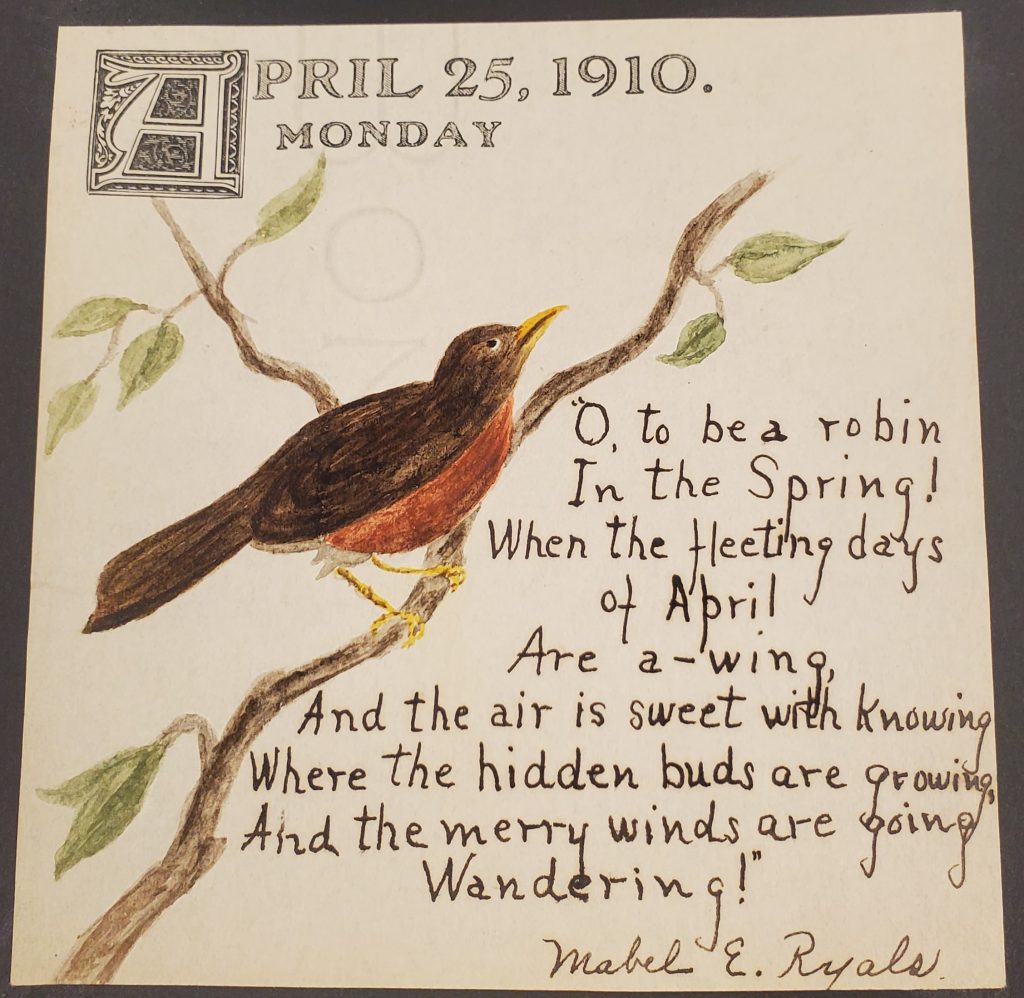
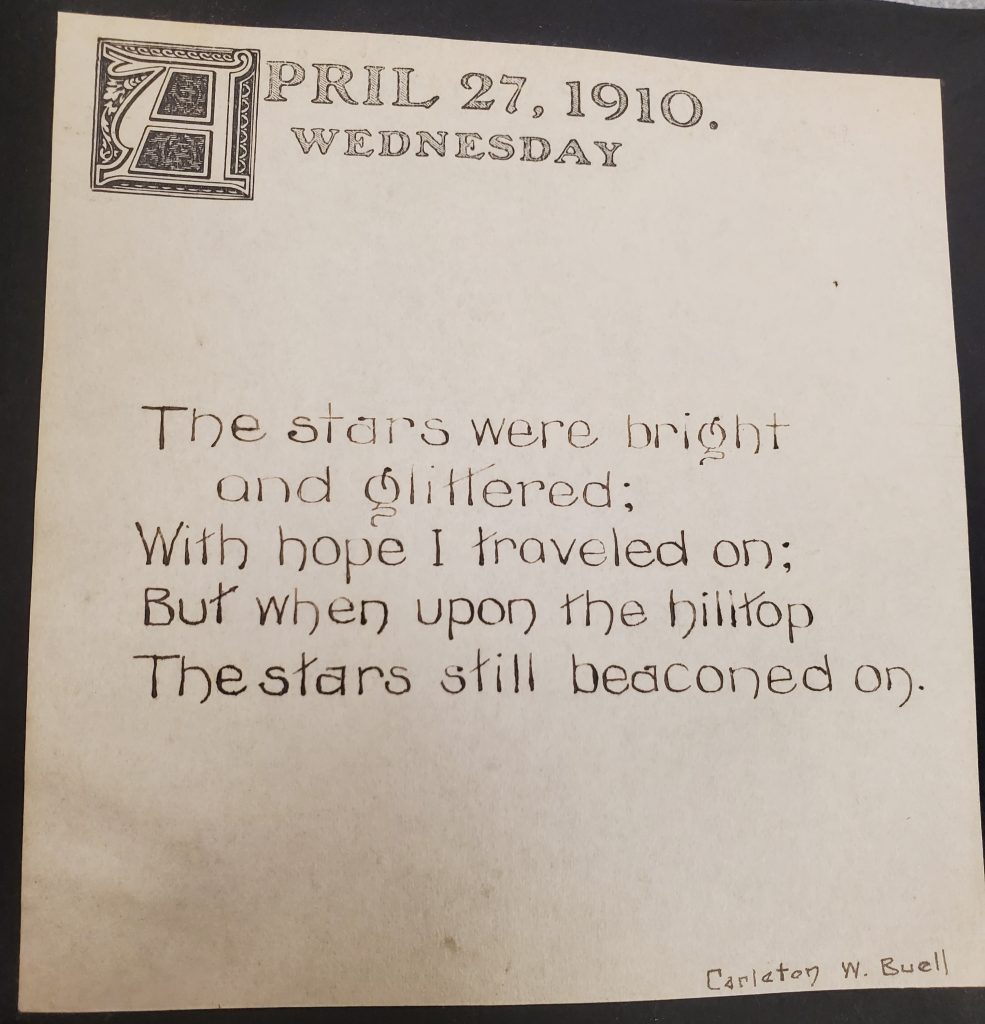
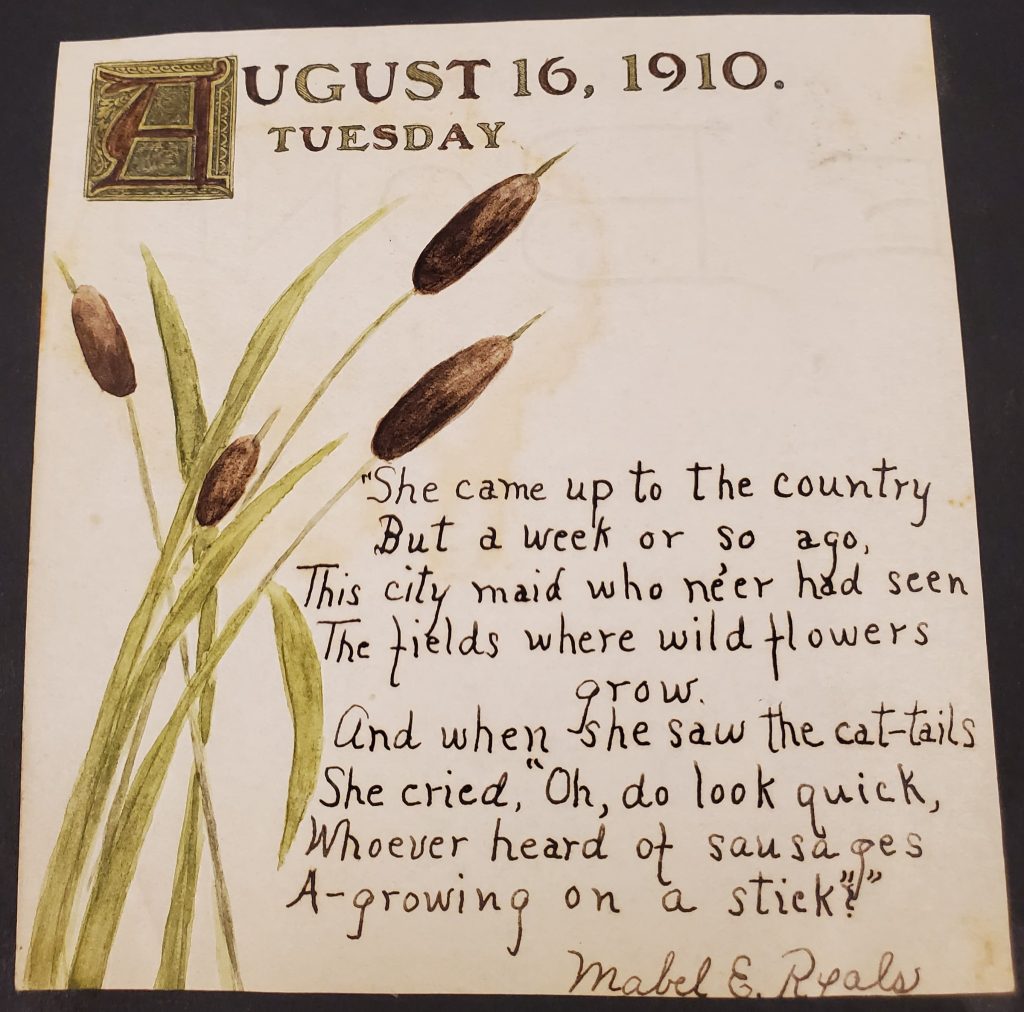
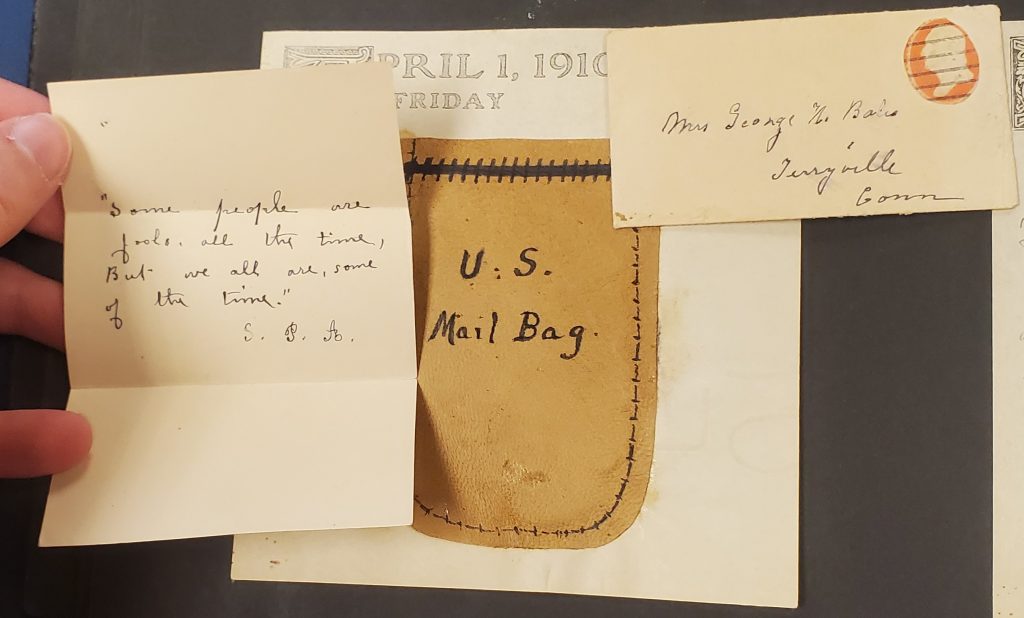
After learning about friendship albums, I began to research Elvira Bates and the friends and family mentioned in the album. The first major thing I learned is this album is not the only record of her family (outside of vital records) that exists in archives. Her husband, George Henry Bates, enlisted at the age of 17 in the 19th Connecticut Infantry (which later became the 2nd Connecticut Heavy Artillery). George H. Bates was witness to several important battles throughout his time serving in the Civil War. During that time, he wrote over 150 letters to his family back home in Terryville CT. Those letters are now held in the University of Michigan archives.
Next, I compiled a list of most of the people who participated in the creation of this album and ended up with over 250 people, including over 30 who contributed more than one day of entries. This was one of the most striking parts of this album. Compared to many of the social interactions we have today with social media, the act of creating a short note, poem, quote, or drawing seems much more personal than commenting on an Instagram post or wishing someone a Happy Birthday on Facebook.
Among the people who contributed to the album were Reverend William Alfred Gay, the pastor of the First Congressional Church in Terryville (he contributed 3 entries); Jennie Purrington a teacher at Shelton Ave School; many single women in the community who appear to be close with Elvira. There are even several people who did not live in the state, including a lady from Cleveland, Ohio, a lady from Queonta, Wyoming, and a couple from Los Angeles, California!
Something else that struck me about this album is that it shows just how much the people of the past were simply people. They told jokes and wrote silly poems to each other, and they even loved their cats just as much as the rest of us, as evidenced by not one, but two photographs of cats included in the album.
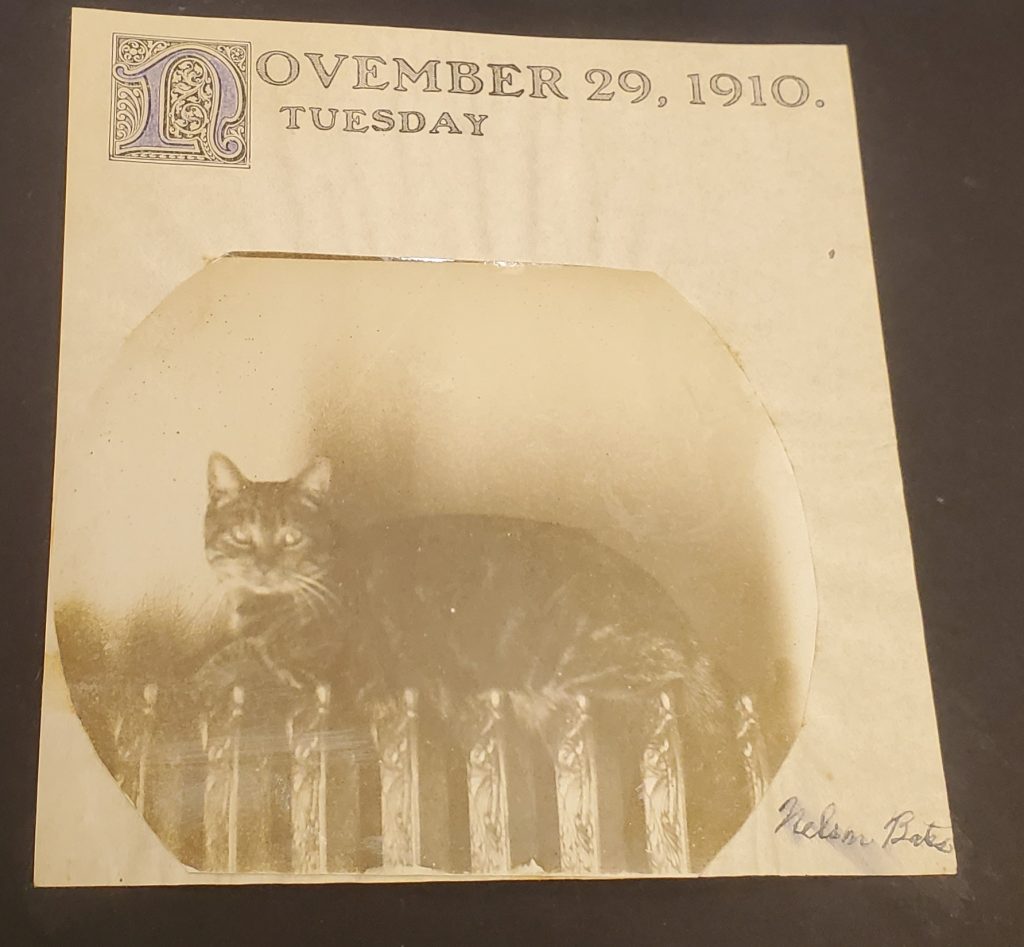

I will leave you with an entry that has left me puzzling for weeks. Should you figure it out, let me know at: naguin@iu.edu

Leave a Reply